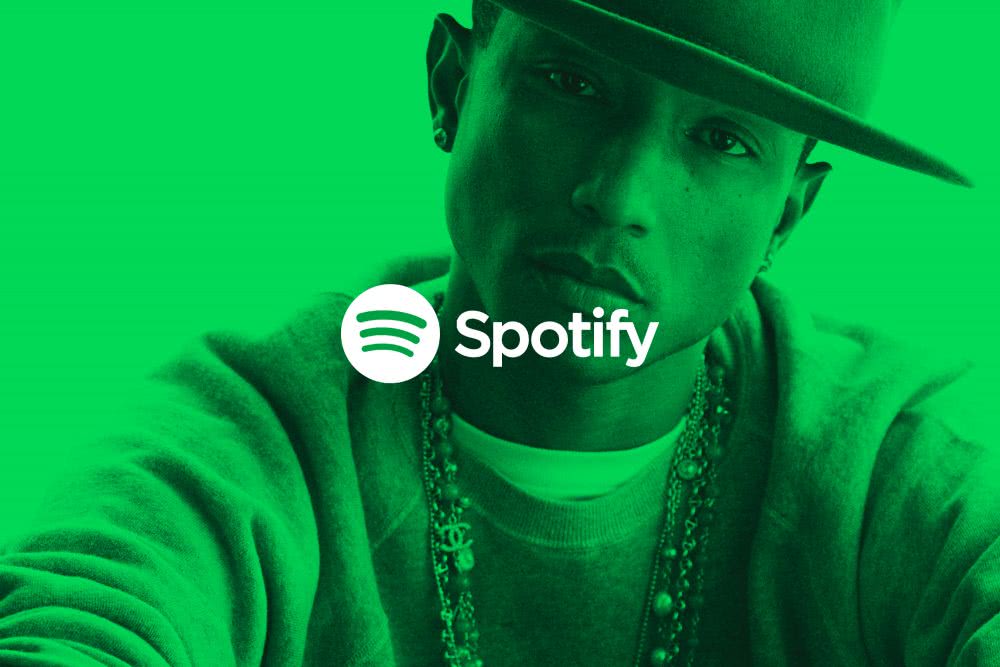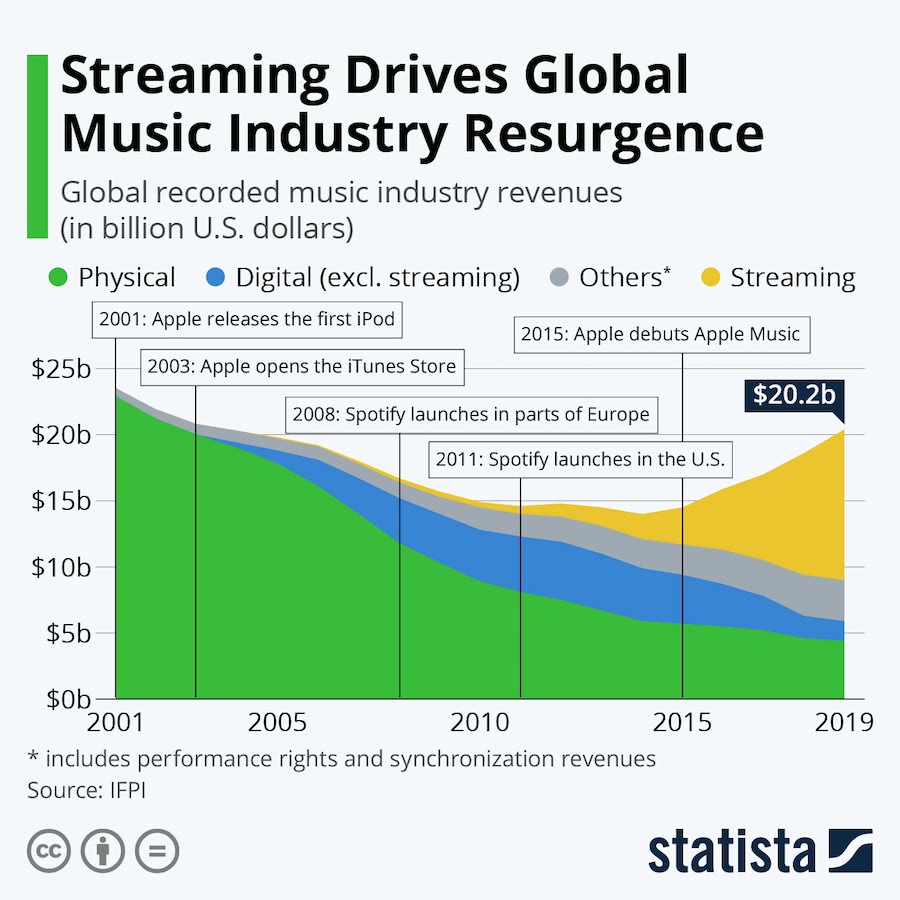Why the cynicism around streaming royalty rates misses the big picture

Recorded music is one of the most turbulent markets in the world. The swift and severe changes over the last twenty years would be enough to give most industries terminal whiplash. As new vulnerabilities, technologies, revenue streams and behaviours take hold, the cynics of our sector rage at the injustice of streaming royalty rates.
They point the finger of blame at the streaming networks for the apparent decline in a musician’s income. But how can this be if streaming is driving a resurgence in recorded music, new markets are legitimising and the industry is returning to its highest revenue since the turn of the millennium?
Most every market works on a relationship between supply and demand, music is no different.
You can plot the demand using sales data, as this shows how much money consumers are handing over for recorded music. These numbers were on a stark plummet from 2000-2014 and the trend seemed irreversible.
File sharing based piracy enabled people to search for a track and access the song instantly without payment. Once the bottle was uncorked and the genie escaped, there was no way people were going to succumb to a payment threshold on every piece of music that they introduced into their life.
It was, of course piracy that let the genie out of the bottle and the longer the industry fought to keep people on the old system, the more we trained them into piracy.
Ever since streaming became widely adopted in 2014, the recorded music market has turned a corner, claiming a steady increase in demand every year since.

Source: statista.com
Yet there has been no shortage of commentators who are willing to ignore this growth and point to streaming as if it represents a decline in real income for musicians. After all, albums aren’t being sold at full price anymore, half cents are being paid out for listens.
On top of that, actual misinformation about royalty rates is being spread and outrage stoked. Sometimes because less numerate commentators are struggling to tell the difference between half a cent or 5 one thousandths of a cent, when it’s presented as: 0.005. Other times because a publishing statement and a streaming royalties statement aren’t that easy to discern, even though they represent two very different revenue streams for an artist.
The timing and conditions of a user’s payment for music is also now vastly different. Records, CDs, commercial cassettes & digital downloads contained a lifetime license in the price. This entitled a fan to listen to the recording, unlimited times for the rest of their life without continuing to pay.
Streaming is more of a ‘pay as you go’ model, where a month of listening is sold and the royalties distributed to the relating artists. Rather than the customer providing a big cash injection to the rights holder up front, they pay them over time. This clearly flattens out the revenue but means the artist will make money for as long as fans listen to their music not just at the time of purchase.
Even with flattening customer payments, the net revenue of the industry is surging. Markets that used to be flooded with piracy are legitimising. People who only bought an album or two a year are now paying monthly subscriptions for music.
Free to listen, commercial radio is taking the backseat to custom user experiences that people seem happy to pay for. There is also way fewer middle men to be paid, without retail, warehouses, shipping and manufacturing costs.
How could any of this mean reduced revenue for artists?
We haven’t talked about supply.
Music has gotten cheaper to make and easier to release. No need for record deals, expensive recording studios, custom equipment, physical manufacturing & retail sales staff, you can make a quality recording in your bedroom and release it globally for little to no cost and it’s happening.
The amount of music that is being released at the moment is mind-boggling. Last year Spotify claimed they were seeing 40,000 new tracks every day – unfathomably more than the amount of music being released when the industry’s revenue last peaked. So even with the same revenue that we had in 2000, with so much more music, how is an individual artist going to see the same gross revenue? On average it must be way down.
This is the single biggest factor that can explain why an artist might be seeing less money than they were 20 years ago. But who truly wants to reverse that? Would you like to see less music coming out? All we are seeing is the process of decentralisation.
Rather than a handful of big businesses, music is now many, many small businesses and many, many careers. Musicians can get efficient with their process, build and connect with an audience and make a living with more ease than ever. There aren’t gatekeepers holding the precious pie close to their chest. Yes the pie is getting cut into more pieces, but the pie is definitely getting bigger.
The revenue of a boomer rockstar (who last released an album in a year when only 50 rock albums came out) may indeed be down. But it’s not the fault of streaming.
This same rockstar sold their fans lifetime licenses on vinyl, then on tape, then on CD and maybe even on digital download, now they want those same fans to pay a higher rate to stream the music they’ve already paid for in the past. Or they simply feel the pinch of having to share the industry’s revenue with more and more active musicians.
The music industry is not some clique of social elites built on exclusion. It’s an open free market, rich with opportunity, where creatives can carve their own destiny. This should be cause for celebration rather than framed in a cynical, jealous narrative by those who pine for the old racket.
This article originally appeared on The Industry Observer, which is now part of The Music Network.

































